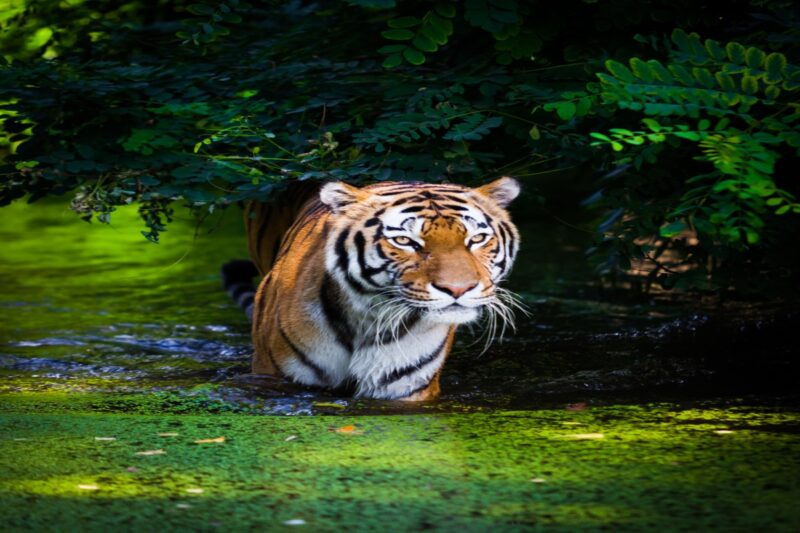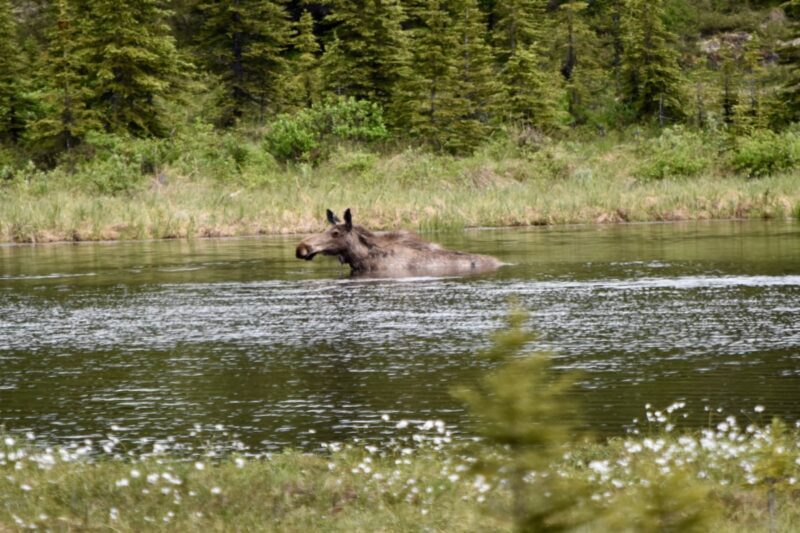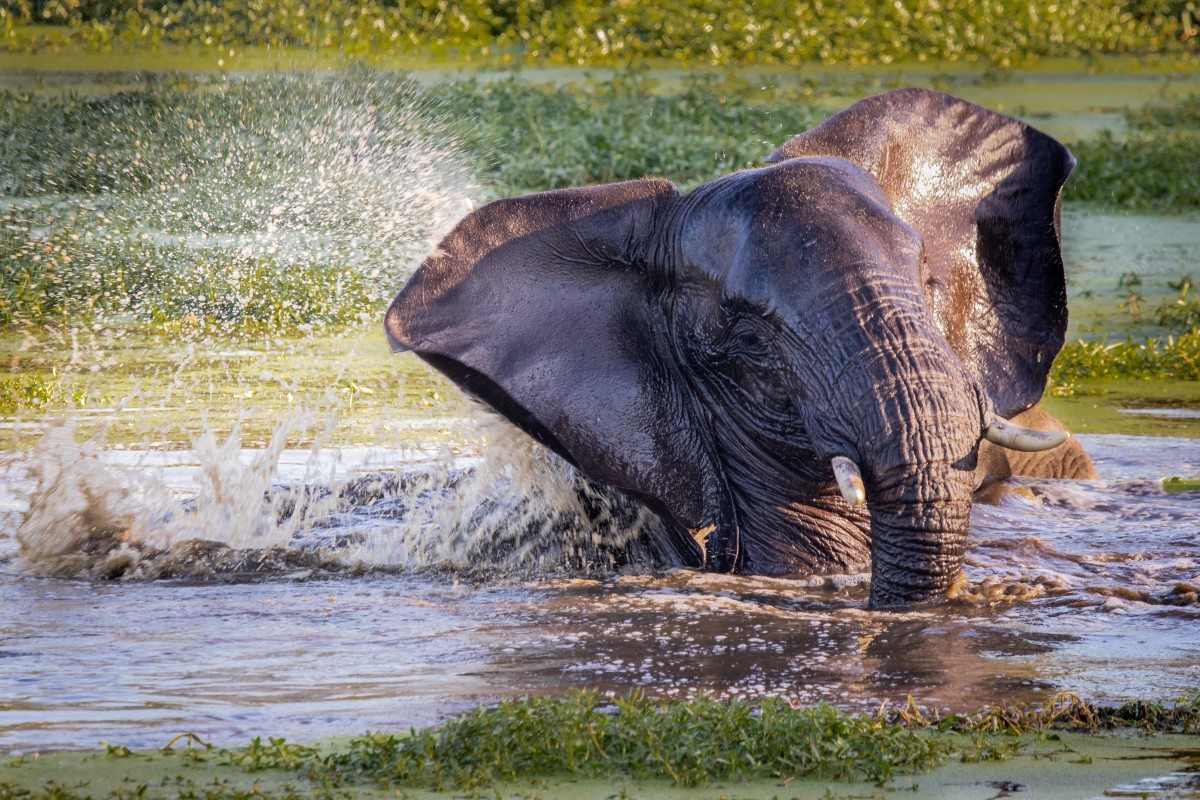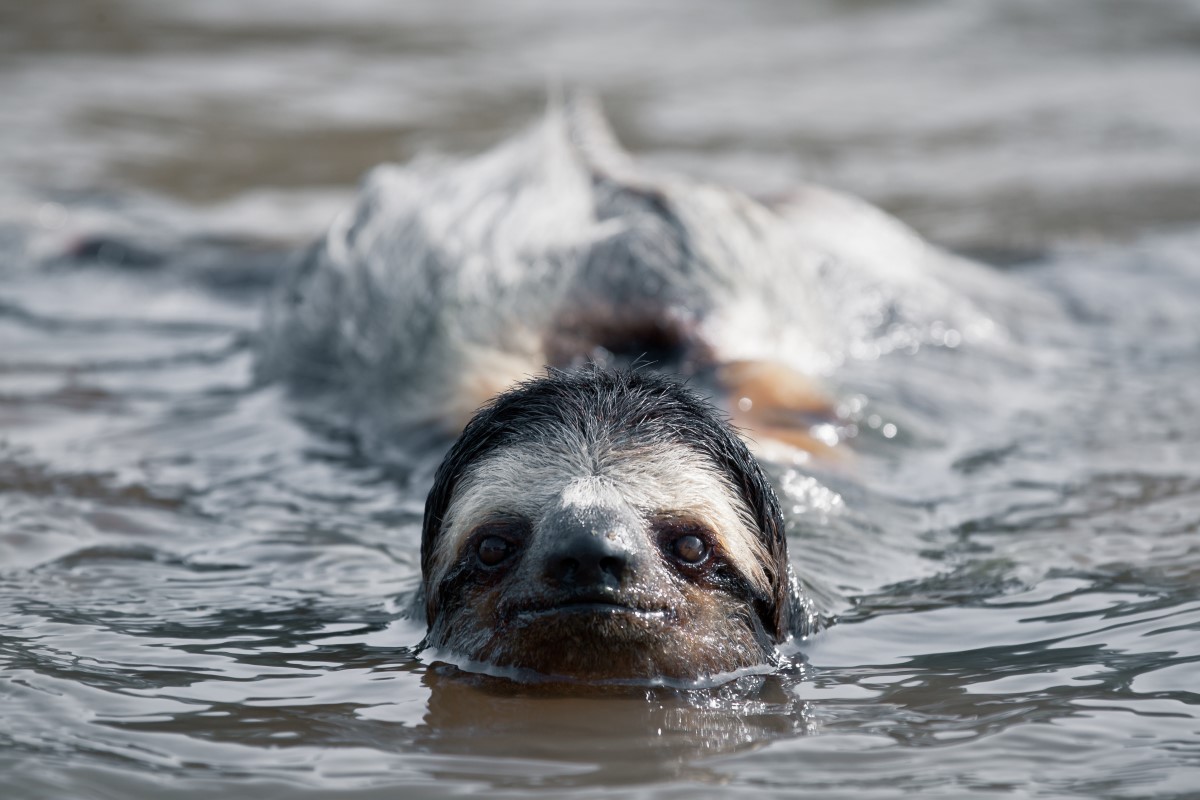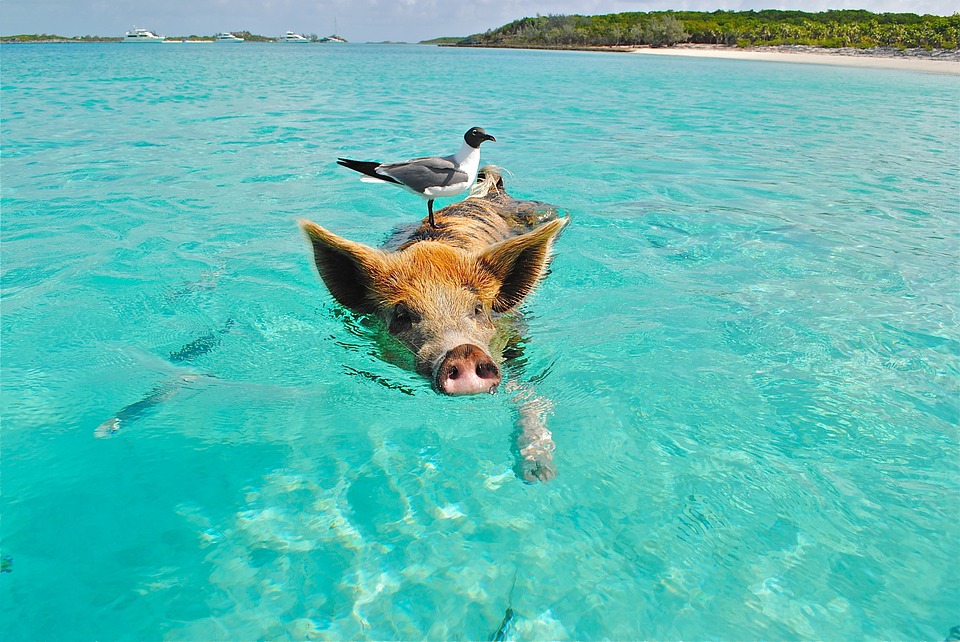
Swimming is not an instinctual skill. This is why we take swimming lessons. Many animals love the land, but would never dip a toe in the water. However, some unexpected animals can “doggy paddle” as great as a… dog! Animals jump in the water for a variety of reasons. Hunting for food, escaping danger and cooling off are just a few of them. Without further ado, here are AquaMobile’s top five swimming animals!
Tigers
Cats usually hate the water, but oddly enough tigers don’t. These cats are amazing swimmers. The UNESCO World Heritage Site of the Sundarbans in Bangladesh is home to over 3000 Bengal tigers that are usually found swimming across tree-lined rivers. Tigers are sometimes called the most adaptive species on Earth, having migrated across Asia and Africa, from tundra to jungle. Tigers share the mangrove forest ecosystem at the mouth of the Ganges River with crocodiles, different species of dolphins and fishing cats.
How strong of swimmers are tigers? Their strong bodies and webbed paws allow them to glide across the water fairly easily. Some have been recorded to have crossed 18 miles (29 kilometres) long rivers. This is more than simply for show. Tigers also lure prey into the water to trap it in some cases as well.
Moose
Humans aren’t the only ones annoyed by humidity and pesky bugs. Swimming is an important part of a moose’s day. Eating aquatic plants such as bladderwort and yellow water lilies and escaping danger is part of the motivation. Moose mothers swim to islands to give birth to avoid predators.
Like us, moose use the water to cool off. Because of their coarse fur, they tend to overheat fairly easily. Their long legs are what give these mammals an advantage when it comes to swimming. Speed and stamina are two factors that help these animals thrive in the water alongside living on land.
Elephants
Elephants love the water, despite being the largest land mammal around and are excellent swimmers. While swimming, you can see their trunks sticking out of the water like a snorkel.
Elephants can float in the water when they are not actively swimming. Their legs kick under the water while swimming, which can draw comparisons to ducks. These strong body parts can propel elephants across the water for up to six hours. Swimming gives these mammals access to food shelters and shortcuts to other places.
Sloths

Sloths take their time when it comes to doing, well… anything! This is not the case in the water though. Sloths love to lounge in the treetops rainforests but like to make a splash every once in a while. Sloths can move three times faster in the water than they do on land. In the water, Sloths slow their heart rate down to one-third of its normal pace. This allows these furry creatures to hold their breath underwater for up to 40 minutes.
Swimming is still not something that sloths do very fast. In the water, these creatures move at 0.27 kilometres per hour. This is what is considered fast for sloths, who get down from their tree around once a week.
Pigs
Pigs may not be able to fly, but they sure can swim! The pigs on the island of Big Major Cay in the Bahamas are a tourist favourite. People of all ages like to watch pigs swim out to greet the incoming boats. This is likely because they associate boats with snack time. How these pigs got to this island, no one knows. However, many Bhamains believe their ancestors were meant to be dinner for a crew of sailors!
When it comes to swimming, most pigs do not go too far. It’s an instinctual action that they do to escape predators and if they fall in the water by accident. Additionally, pigs use water to retain their body temperature. After bathing in mud, pigs get wet to ensure the mud absorbs and evaporates.

